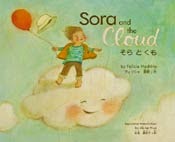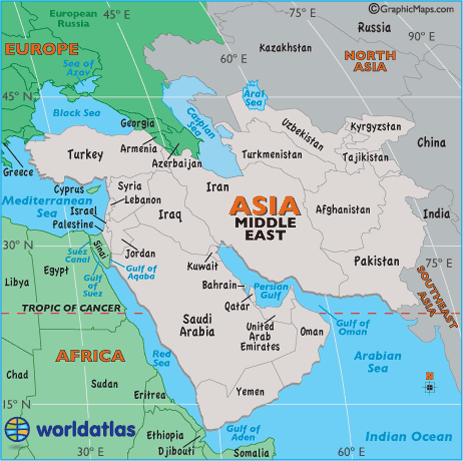I am doing our Fairy Tale in Different Cultures a day early. I am hoping to have our dish from Croatia tomorrow. I hope you will come see what we make!
Continuing with our Asian-Pacific theme for May, I thought I would share another Cinderella tale this time from the Philippines. The book is Abadeha: The Philippine Cinderella adapted by Myrna J. de la Paz. Before I share the story and craft, a bit about the Philippines.
The Philippines is a sovereign island country in Southeast Asia. It lies in the western Pacific Ocean. It consists of over 7,000 islands. The total area of the country is about 115,831 square miles making it the 64th largest country in the world. It is a constitutional republic with a presidential system. Filipino and English are the official languages however there are over 171 living languages spoken there. The capital is Manila and the most populous city is Quezon city. It is located on the Pacific Ring of Fire and close to the equator and as a result is prone to earthquakes and typhoons. Its rainforests and coastlines provide diverse ranges of birds, animals and plants. It has one of the highest discovery rates in the world with sixteen new species of mammals discovered in the last ten years. They have many unique species of animals as well as plants like many rare orchids and rafflesia.
In 1521 Ferdinand Magellan arrived and claimed the islands for Spain. The Spanish established Manilla as the capital city in 1571. The Spanish fought many wars with indigenous people as well as other countries for control of the Philippines. The Spanish introduced the idea of free public schooling as well as Christianity. They also brought many different types of food from the Americas like pineapple, corn, chili peppers and tomatoes. In 1898, Spain sold their rights to the United States for 20 million dollars as part of the 1898 Treaty of Paris. In 1935 the Philippines were granted Commonwealth status. During World War II the Japanese Empire invaded and took control until the Allied Forces defeated them in 1945. The Philippines became a founding member of the United Nations and the United States recognized its independence in 1946.
Now onto our story. The story begins as many Cinderella tales do. A fisherman named Abek, his wife, Abadesa, and their beautiful daughter, Abadeha, live happily in the islands called the Philippines. When Abadeha is thirteen her mother suddenly gets sick and dies. Abek and Abadeha are filled with sorrow. Eventually Abek marries a widow from another island who has two daughters of her own. He hopes to make a loving family for himself and Abadeha. However the stepmother immediately notice how plain and mean-spirited her daughters are in comparison to Abadeha. Abek is away from the home more since he has a larger family to support and while he is away the stepmother mistreats Abadeha making her work from morning to night cleaning the house, cooking all the meals, fetching the water from the river and tending the stove. She is often covered with soot and each night she is so tired she falls asleep on the kitchen floor. Her stepsisters began to tease her for her dirtiness. The stepmother begins to throw impossible tasks for Abadeha to do like change a black handkerchief to white and a white one to black or she will be whipped. Abadeha goes to the river crying and missing her mother. She cries out a prayer of sorts to her mother and the creator of earth. Suddenly the Spirit of the Forest appears and promises Abadeha that all of her hard work and patience will be rewarded. Then she changes the handkerchiefs for her. When Abadeha returns home, her stepmother is angry that she was able to do it. The next morning she has Abadeha spread newly harvested rice on a mat to dry and then pound the winnow and cook the rice for the evening meal. While Abadeha works in the kitchen a wild pig wanders into the yard and eats the rice while the stepmother watches. The stepmother does nothing until the pig has left and then tortures Abadeha and tells her she must mend the mat that the pig shredded. Abadeha takes the shreds of mat to the river and says her prayer again. The Spirit of the Forest comes even quicker this time. She has female spirits quickly repair the mat and gives Abadeha a sarimanok. A sarimanok is a chicken with a long flowing tail and feathers the color of the rainbow. The stepmother is annoyed again when she sees Abadeha has completed the task. She takes the sarimanok from her and tells her she will take care of her pet for her. Early the next morning she chops off its head and feet and begins cooking it for dinner. Abadeha sees it and weeps. She grabs its feet and runs to the river. The Spirit tells her to bury the feet by her mother's grave and to pray to her ancestors. She does this and plants a garden around her mother's grave as well. It is awhile before she returns to her mother's grave and when she does she discovers a tree filled with treasures like jewelry and gowns. She grabs a few pieces of jewelry and keeps the enchanted tree to herself.
While hunting in the forest, the son of the island chieftain saw a sarimanok. He followed it to Abadeha's secret garden. He took a ring from the tree and put it on his finger. When he returned home his finger began to swell and he could not get the ring off. He told his father about his finger and how he was in great pain. His father sent for the Babaylan, the priest healer. The Babylan told him he had to listen to his heart. That night the pain in the prince's finger was so great and he had a dream where a sarimanok brings him an orchid and when the prince kisses the flower it turns into a beautiful maiden who shows him the ring in her hand. He tells his father of the dream and his father announces that the girl who can remove the ring from his son's finger will marry his son. When Abadeha heard this announcement she asked her stepmother to go and her stepmother locked her in the kitchen and then went to take a nap. The Spirit of the Forest came and unlocked the door for her. When she arrived her stepsisters were there. They began to yell at her for being there. The prince heard the commotion and asked Abadeha to come to him. She lovingly was able to take the ring off his finger even if she was dressed in rags. The prince was overjoyed and married her. Abadeha wore the golden gown and the jewelry from the enchanted tree. Her father came home just in time for the wedding. The prince banished the stepmother and her daughters to the chicken yard. Abadeha and the prince shared their happiness and wealth with the people on the islands and lived in peace and love and harmony.
In the author's note it is mentioned that this story is a traditional Philippine folktale that has disappeared from mainstream Philippine folk literature. With more than 300 years of Spanish colonization and a century of Americanization this is a common casualty there. She wanted to record the story before it was lost forever.
As a craft I made a paper plate sarimanok. I did it similar to the sea gulls Hazel and I made at the library a few weeks ago. I added the red comb and the tail of rainbow feathers. It is very easy.
For other Asian-Pacific Island Cinderella tales check out:
Continuing with our Asian-Pacific theme for May, I thought I would share another Cinderella tale this time from the Philippines. The book is Abadeha: The Philippine Cinderella adapted by Myrna J. de la Paz. Before I share the story and craft, a bit about the Philippines.
 |
| Source: Lonely Planet |
In 1521 Ferdinand Magellan arrived and claimed the islands for Spain. The Spanish established Manilla as the capital city in 1571. The Spanish fought many wars with indigenous people as well as other countries for control of the Philippines. The Spanish introduced the idea of free public schooling as well as Christianity. They also brought many different types of food from the Americas like pineapple, corn, chili peppers and tomatoes. In 1898, Spain sold their rights to the United States for 20 million dollars as part of the 1898 Treaty of Paris. In 1935 the Philippines were granted Commonwealth status. During World War II the Japanese Empire invaded and took control until the Allied Forces defeated them in 1945. The Philippines became a founding member of the United Nations and the United States recognized its independence in 1946.
Now onto our story. The story begins as many Cinderella tales do. A fisherman named Abek, his wife, Abadesa, and their beautiful daughter, Abadeha, live happily in the islands called the Philippines. When Abadeha is thirteen her mother suddenly gets sick and dies. Abek and Abadeha are filled with sorrow. Eventually Abek marries a widow from another island who has two daughters of her own. He hopes to make a loving family for himself and Abadeha. However the stepmother immediately notice how plain and mean-spirited her daughters are in comparison to Abadeha. Abek is away from the home more since he has a larger family to support and while he is away the stepmother mistreats Abadeha making her work from morning to night cleaning the house, cooking all the meals, fetching the water from the river and tending the stove. She is often covered with soot and each night she is so tired she falls asleep on the kitchen floor. Her stepsisters began to tease her for her dirtiness. The stepmother begins to throw impossible tasks for Abadeha to do like change a black handkerchief to white and a white one to black or she will be whipped. Abadeha goes to the river crying and missing her mother. She cries out a prayer of sorts to her mother and the creator of earth. Suddenly the Spirit of the Forest appears and promises Abadeha that all of her hard work and patience will be rewarded. Then she changes the handkerchiefs for her. When Abadeha returns home, her stepmother is angry that she was able to do it. The next morning she has Abadeha spread newly harvested rice on a mat to dry and then pound the winnow and cook the rice for the evening meal. While Abadeha works in the kitchen a wild pig wanders into the yard and eats the rice while the stepmother watches. The stepmother does nothing until the pig has left and then tortures Abadeha and tells her she must mend the mat that the pig shredded. Abadeha takes the shreds of mat to the river and says her prayer again. The Spirit of the Forest comes even quicker this time. She has female spirits quickly repair the mat and gives Abadeha a sarimanok. A sarimanok is a chicken with a long flowing tail and feathers the color of the rainbow. The stepmother is annoyed again when she sees Abadeha has completed the task. She takes the sarimanok from her and tells her she will take care of her pet for her. Early the next morning she chops off its head and feet and begins cooking it for dinner. Abadeha sees it and weeps. She grabs its feet and runs to the river. The Spirit tells her to bury the feet by her mother's grave and to pray to her ancestors. She does this and plants a garden around her mother's grave as well. It is awhile before she returns to her mother's grave and when she does she discovers a tree filled with treasures like jewelry and gowns. She grabs a few pieces of jewelry and keeps the enchanted tree to herself.
While hunting in the forest, the son of the island chieftain saw a sarimanok. He followed it to Abadeha's secret garden. He took a ring from the tree and put it on his finger. When he returned home his finger began to swell and he could not get the ring off. He told his father about his finger and how he was in great pain. His father sent for the Babaylan, the priest healer. The Babylan told him he had to listen to his heart. That night the pain in the prince's finger was so great and he had a dream where a sarimanok brings him an orchid and when the prince kisses the flower it turns into a beautiful maiden who shows him the ring in her hand. He tells his father of the dream and his father announces that the girl who can remove the ring from his son's finger will marry his son. When Abadeha heard this announcement she asked her stepmother to go and her stepmother locked her in the kitchen and then went to take a nap. The Spirit of the Forest came and unlocked the door for her. When she arrived her stepsisters were there. They began to yell at her for being there. The prince heard the commotion and asked Abadeha to come to him. She lovingly was able to take the ring off his finger even if she was dressed in rags. The prince was overjoyed and married her. Abadeha wore the golden gown and the jewelry from the enchanted tree. Her father came home just in time for the wedding. The prince banished the stepmother and her daughters to the chicken yard. Abadeha and the prince shared their happiness and wealth with the people on the islands and lived in peace and love and harmony.
In the author's note it is mentioned that this story is a traditional Philippine folktale that has disappeared from mainstream Philippine folk literature. With more than 300 years of Spanish colonization and a century of Americanization this is a common casualty there. She wanted to record the story before it was lost forever.
As a craft I made a paper plate sarimanok. I did it similar to the sea gulls Hazel and I made at the library a few weeks ago. I added the red comb and the tail of rainbow feathers. It is very easy.
For other Asian-Pacific Island Cinderella tales check out:
- Golden Sandals: A Middle Eastern Cinderella Tale
- The Golden Slipper: A Vietnamese Cinderella Tale
- Chinese Cinderella Tales
- The Korean Cinderella
- Kongi and Potgi: A Cinderella Tale from Korea
- Kao and the Golden Fish A Cinderella tale from Thailand
- The Gift of the Crocodile: A Cinderella Tale from Indonesia





















































